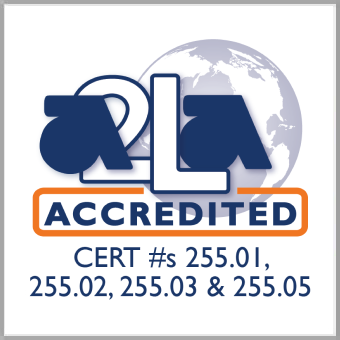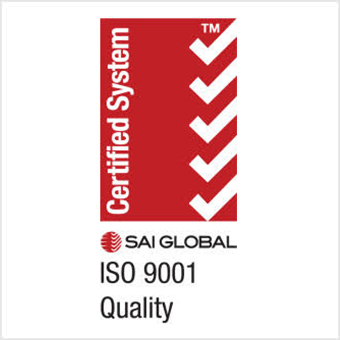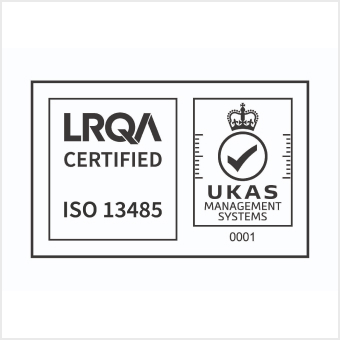ASTM D6284
1. Introduction to ASTM D6284
ASTM D6284 is a standard test method published by ASTM International, which provides a procedure for determining the abrasion and wear resistance of rubber materials when exposed to liquid media. This test evaluates how a rubber sample behaves under conditions of friction and liquid exposure, which is critical for understanding how the rubber will perform in real-world applications where it is subject to both mechanical stress and chemical interactions with liquids.
This standard is widely utilized across multiple industries, including automotive, aerospace, industrial manufacturing, and consumer products, where rubber components are exposed to wear, friction, and different types of liquids such as oils, fuels, and solvents.
2. Purpose and Scope of ASTM D6284
The primary goal of ASTM D6284 is to provide a standardized methodology for evaluating the durability of rubber materials when exposed to liquid media. The scope of this test method includes:
- Wear and Abrasion Resistance: The ability of rubber to resist wear and tear when subjected to friction while in contact with a liquid medium.
- Impact of Liquids on Rubber Properties: The test measures how different liquids, such as oils or solvents, impact the mechanical properties of rubber, such as hardness, tensile strength, elongation, and mass loss.
- Durability in Service: By understanding the effects of liquid exposure, this standard helps predict how rubber components will perform and last over time in real-world conditions where they may be exposed to mechanical stresses and liquids.
The test is applicable to both vulcanized and thermoplastic rubber materials, and it is often used to simulate the conditions that these materials will face during their service life.
3. Overview of the Testing Process
The process outlined in ASTM D6284 is divided into several steps, from sample preparation to evaluation. Below is an overview of the procedure:
- Sample Preparation:
- Rubber specimens are cut into uniform shapes and sizes as prescribed by the standard. The shape and size of the specimen will depend on the specific equipment being used.
- The specimen should be cleaned and dried before testing to remove any contaminants or moisture that may affect the results.
- Test Equipment:
- The test uses a specialized abrasion testing machine that can apply frictional forces to the rubber sample while it is immersed in the liquid medium. Commonly used equipment for this test includes the Taber Abraser or Rotary Abrader, both of which provide a controlled environment for wear testing.
- The machine applies a known pressure and rotational speed to the rubber specimen, simulating the wear and abrasion the material would experience in real-life applications.
- Exposure to Liquid Media:
- During testing, the rubber sample is exposed to the liquid media (e.g., oil, fuel, solvent, or water). The liquid is typically introduced in a controlled environment, ensuring that the liquid has direct contact with the rubber surface during the wear process.
- The duration of exposure to the liquid is defined by the standard and may vary depending on the specific test conditions.
- Wear Testing:
- The specimen undergoes a set number of cycles, where the friction is applied to the rubber while it remains in contact with the liquid. The number of cycles can vary depending on the desired test outcome.
- During the test, the wear of the rubber material is measured in terms of mass loss, volume loss, or depth of wear. The wear is typically quantified after a predetermined number of cycles or exposure time.
- Evaluation:
- After the test, the rubber specimen is weighed to determine any mass loss or gain, which is used to calculate the wear rate.
- Other tests, such as hardness or tensile strength, may be performed to evaluate changes in the mechanical properties of the rubber after exposure to the liquid.
- The results are compared to baseline measurements to quantify how much the liquid has affected the rubber material.
- Reporting Results:
- The test results are reported in terms of the wear rate (e.g., mass loss per 1,000 cycles) and other changes in the rubber’s properties.
- The report includes detailed observations on the type and extent of wear, such as cracking, swelling, discoloration, or loss of elasticity, along with the percentage changes in properties like tensile strength and elongation.
4. Key Parameters and Variables in ASTM D6284
Several critical parameters affect the results of the abrasion and wear testing process outlined in ASTM D6284. These include:
- Test Specimen Geometry: The shape and size of the rubber specimen, as well as the surface area exposed to wear, play a crucial role in the results.
- Load and Pressure: The amount of pressure applied to the specimen during testing can vary depending on the equipment and the intended application. Higher loads tend to increase the wear rate.
- Speed of Rotation or Friction: The rotational speed or frictional force applied to the rubber can significantly influence the wear rate. Faster speeds or higher friction generally result in greater wear.
- Test Liquid: The type of liquid media used in the test (e.g., oil, solvent, fuel, water) can have a profound impact on the rubber’s performance. Different liquids can cause different levels of degradation in rubber, affecting the wear results.
- Exposure Time or Number of Cycles: The duration of the test, typically measured by the number of friction cycles, is another critical factor in assessing the wear resistance of the rubber material.
5. Key Properties Measured During ASTM D6284 Testing
ASTM D6284 evaluates several important properties of rubber materials under wear and liquid exposure:
- Mass Loss: The most direct measurement of wear is the mass loss of the rubber specimen after the test. This is a key indicator of how much material has been lost due to friction and liquid exposure.
- Wear Rate: The wear rate is often calculated as the amount of material lost per unit of time or per 1,000 cycles. A high wear rate indicates lower abrasion resistance.
- Hardness Change: Rubber hardness is typically measured using a Shore durometer before and after the wear test. Changes in hardness can provide insight into how the rubber’s structure has been affected by wear and liquid exposure.
- Tensile Strength: The tensile strength of the rubber is measured before and after the test. A decrease in tensile strength indicates that the rubber has weakened due to the combined effects of wear and liquid exposure.
- Elongation at Break: The elongation at break measures the stretchability of the rubber. A reduction in elongation at break after the test indicates that the material has become more brittle, a sign of degradation.
- Visual Inspection: In addition to physical measurements, visual inspection plays a key role in identifying surface damage, cracking, discoloration, or other signs of degradation that may occur due to friction and liquid exposure.
6. Applications of ASTM D6284
The results obtained from ASTM D6284 testing are essential for a wide range of industries that use rubber components exposed to wear and liquid environments. Some of the most notable applications include:
- Automotive Industry:
- Tires: The wear resistance of tires is critical for performance and safety. The test helps evaluate how rubber behaves when exposed to various automotive fluids like oils, fuels, and brake fluids.
- Seals and Gaskets: Automotive seals and gaskets are often exposed to oils, coolants, and other fluids. ASTM D6284 helps assess their durability under these conditions.
- Industrial Equipment:
- Conveyor Belts: Rubber used in industrial conveyor belts can be subject to wear from both mechanical forces and liquid exposure. This test helps determine the longevity of such belts.
- Hoses and Seals: Rubber components like hoses and seals, which are exposed to liquids in industrial machinery, are tested for their wear resistance to ensure reliability and performance.
- Aerospace:
- O-rings and Seals: Aerospace applications require materials that maintain integrity under extreme conditions, including exposure to oils, fuels, and hydraulic fluids. ASTM D6284 helps determine how rubber seals perform under these harsh conditions.
- Mining and Heavy Equipment:
- Rubber components in mining and heavy equipment are often exposed to abrasive environments and liquids. This test helps ensure the wear resistance and longevity of these components.
- Consumer Goods:
- Rubber products such as shoes, floor mats, and sports equipment are exposed to wear and liquids during regular use. ASTM D6284 helps manufacturers ensure that these products meet durability standards.
- Marine Industry:
- Rubber used in the marine industry, including seals, hoses, and gaskets, is exposed to seawater and other corrosive fluids. ASTM D6284 helps assess the material’s performance in such environments.
7. Limitations and Considerations
While ASTM D6284 provides valuable insights into the wear and abrasion resistance of rubber materials, several limitations and considerations must be taken into account:
- Real-World Conditions: The test simulates wear under controlled conditions, but real-world applications may involve complex environments that combine different types of wear, temperature fluctuations, and more.
- Test Variables: The results can vary significantly depending on the choice of liquid medium, load, and test duration. These factors should be carefully considered when interpreting the results.
- Material Variability: Different rubber formulations may react differently to wear and liquid exposure, so the results from this test may not be universally applicable to all rubber types.
8. Conclusion
ASTM D6284 is a critical standard for evaluating the wear resistance of rubber materials when exposed to various liquid media. By quantifying how rubber materials respond to friction and chemical exposure, this test method helps manufacturers and engineers select the most appropriate materials for applications where wear and liquid exposure are concerns. The standard’s ability to simulate real-world conditions is essential for ensuring the performance, durability, and reliability of rubber components across a wide range of industries.
By providing detailed insights into wear rates, mass loss, hardness, tensile strength, and other physical properties, ASTM D6284 plays a vital role in the development of high-performance rubber materials suitable for demanding environments



